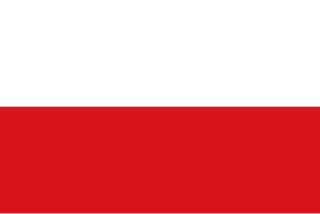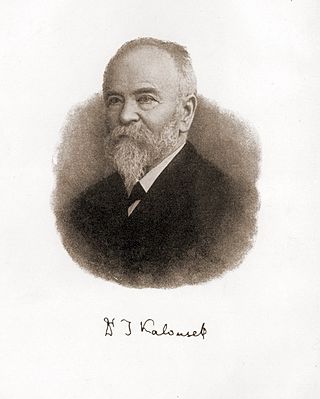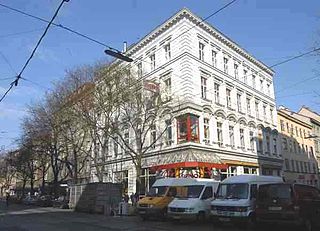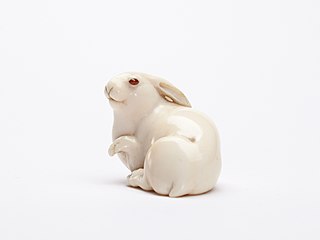
Vienna is the capital, most populous city, and one of nine federal states of Austria. It is Austria's primate city, with just over two million inhabitants. Its larger metropolitan area has a population of nearly 2.9 million, representing nearly one-third of the country's population. Vienna is the cultural, economic, and political center of the country, the fifth-largest city by population in the European Union, and the most-populous of the cities on the Danube river.

Simmering is the 11th district of Vienna, Austria. It borders the Danube and was established as a district in 1892. Simmering has several churches, some museums, schools, old castles, and four cemeteries, one of them being the Wiener Zentralfriedhof, one of the largest cemeteries of Europe.

The Lands of the Bohemian Crown were the states in Central Europe during the medieval and early modern periods with feudal obligations to the Bohemian kings. The crown lands primarily consisted of the Kingdom of Bohemia, an electorate of the Holy Roman Empire according to the Golden Bull of 1356, the Margraviate of Moravia, the Duchies of Silesia, and the two Lusatias, known as the Margraviate of Upper Lusatia and the Margraviate of Lower Lusatia, as well as other territories throughout its history. This agglomeration of states nominally under the rule of the Bohemian kings was referred to simply as Bohemia. They are now sometimes referred to in scholarship as the Czech lands, a direct translation of the Czech abbreviated name.

The Emperor Franz Joseph Railway was an Austrian private railway company, named after Emperor Franz Joseph I. It operated railway lines from the Austrian capital Vienna to Prague and Eger (Cheb) in Bohemia.

Favoriten, the 10th district of Vienna, Austria, is located south of the central districts. It is south of Innere Stadt, Wieden and Margareten. Favoriten is a heavily populated urban area with many residential buildings, but also large recreational areas and parks.

Josef Kalousek, was a Czech historian and professor of Czech history at Univerzita Karlova in Prague.

During the 20th century, there were numerous Czech schools in Vienna. These provided the city's large Czech population with instruction in Czech.
Czech print media in Vienna have a long history dating back to the 18th and 19th century, when Vienna had a sizeable Czech population.
The Czechoslovak Social Democratic Workers Party in the Republic of Austria was a political party in Austria, working amongst the Czech minority. The party was founded on December 7, 1919, as the Vienna branch of the Czechoslovak Social Democratic Workers Party separated itself from the party centre in Prague. The party worked closely together with the Social Democratic Workers Party of Austria (SDAPÖ), and cooperated with the Austrian Social Democrats on all political issues. The party contested parliamentary elections on joint lists together with SDAPÖ.

The Hare with Amber Eyes: A Hidden Inheritance (2010) is a family memoir by British ceramicist Edmund de Waal. De Waal tells the story of his family, the Ephrussi, once a very wealthy European Jewish banking dynasty, centred in Odessa, Vienna and Paris, and peers of the Rothschild family. The Ephrussis lost almost everything in 1938 when the Nazis confiscated their property, and were unable to recover most of their property after the war, including priceless artwork; an easily hidden collection of 264 Japanese netsuke miniature sculptures was saved, tucked away inside a mattress by Anna, a loyal maid at Palais Ephrussi in Vienna during the war years. The collection has been passed down through five generations of the Ephrussi family, providing a common thread for the story of its fortunes from 1871 to 2009. In 2021, The Hare with Amber Eyes was distributed in Vienna as a free book, with a print run of 100,000 copies.
The following is a timeline of the history of the city of Vienna, Austria.

The coat of arms of Moravia has been used for centuries to represent Moravia, a traditional province in the present-day Czech Republic. The coat of arms is also present in a field of the coat of arms of the Czech Republic.
The following is a timeline of the history of the city of Linz, Austria.

Ignaz (Franz) von Mosel was an Austrian court official, composer and music writer.
Felix Czeike was an Austrian historian and popular educator. He was an author and partly also editor of numerous publications on the history of Vienna and was the director of the Wiener Stadt- und Landesarchiv. His main work is the six-volume Historische Lexikon Wien.

The Budweis-Linz-Gmunden Horse-Drawn Railway was the second public railway line to be opened in mainland Europe. It opened in stages between 1827 and 1836, and principally served the transport of salt from the Upper Austrian Salzkammergut to Bohemia.

The Madonna of Rudolfov is one of the most valuable monuments of early Gothic sculpture in Bohemia. It probably dates back to the end of the reign of Ottokar II of Bohemia, when the Dominican Church of the Presentation of the Blessed Virgin Mary in České Budějovice was consecrated in 1274. It is on display in the permanent exhibition of the Aleš South Bohemian Gallery in Hluboká nad Vltavou.

The Länderbank, full original name k. k. privilegierte Österreichische Länderbank, was a major Austrian bank, created in 1880. In 1922 its head office was moved to Paris under the name Banque des Pays de l'Europe Centrale, even though its activity remained overwhelmingly in the Austrian operations. After the 1938 Anschluss the latter came under control of Dresdner Bank by the name Länderbank Wien. It was nationalized in 1946, renamed Österreichische Länderbank AG in 1948, and eventually merged in 1991 with Vienna's Zentralsparkasse to form Bank Austria, which in turn has been a subsidiary of UniCredit since 2005.

The Wiener Bankverein or Bank-Verein was a major bank in the Habsburg Monarchy and the First Austrian Republic, founded in 1869. In 1888 it was the fourth-largest bank of Austria-Hungary by market capitalization, behind the Austro-Hungarian Bank, the Länderbank, and the Creditanstalt. It merged with the troubled Creditanstalt in 1934 to form Creditanstalt-Bankverein. Wiener Bankverein is thus one of the many predecessor entities of UniCredit, as the latter in 2005 acquired Bank Austria which itself had merged with Creditanstalt in 1997.

Zbyněk Sekal was a Czech sculptor, painter and translator. During World War II he was imprisoned for three years in the Mauthausen concentration camp. After the Warsaw Pact invasion of Czechoslovakia in August 1968, he emigrated to Austria. Already in the mid-1960s, he was considered one of the most important and distinctive Czech sculptors.
















